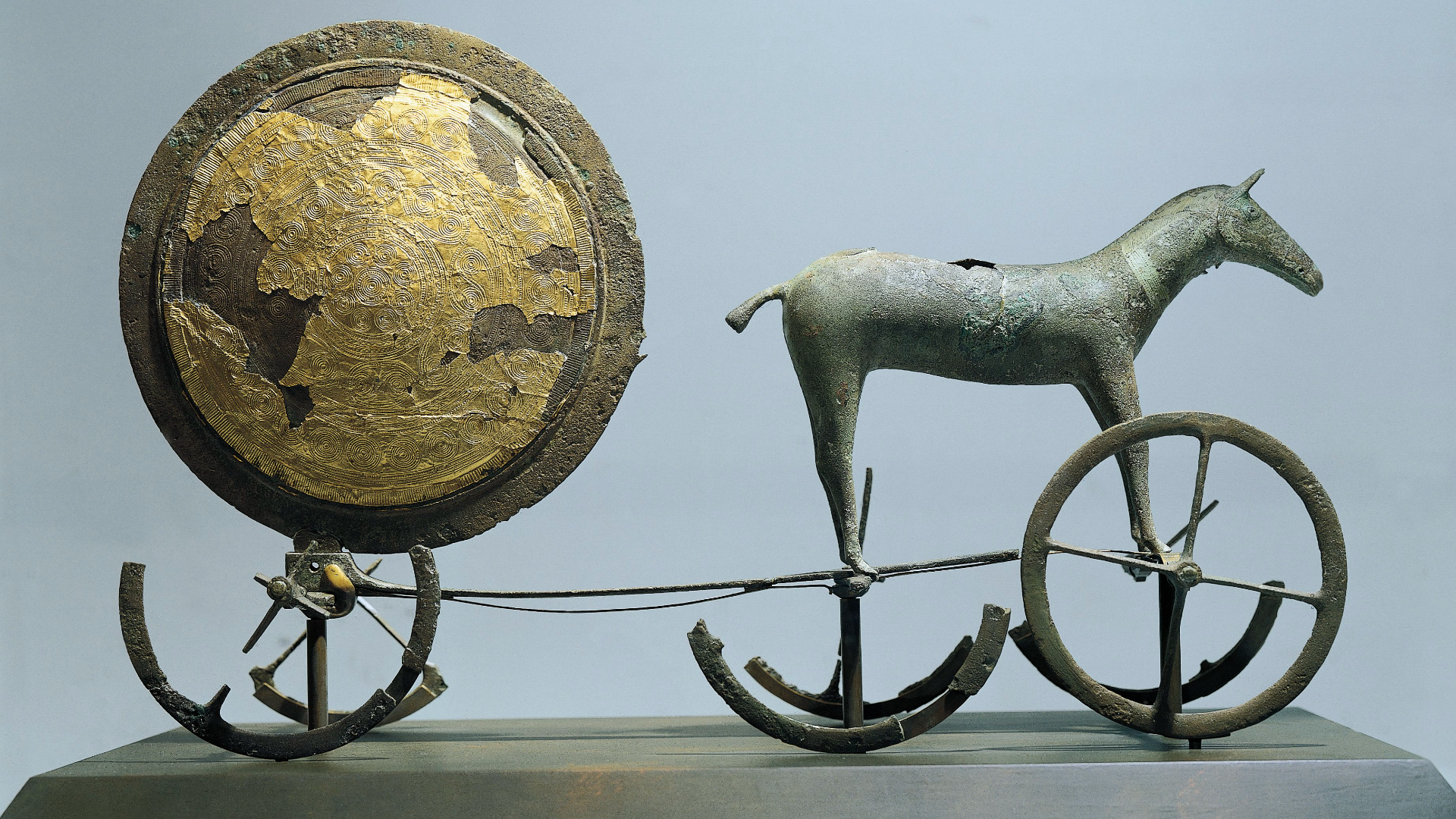Name: Sun Chariot
What it is: A bronze and gold leaf diorama of a horse pulling a sun disk
Where it is from: Trundholm moor, in Zealand, Denmark
When it was made: Circa 1400 B.C.
Related: Prosciutto di Portici: A portable sundial that looks like a pork leg — and it was likely owned by Julius Caesar’s father-in-law before Mount Vesuvius erupted
What it tells us about the past:
Three centuries after horse-drawn chariots were introduced to Scandinavia, a Bronze Age artisan crafted the Sun Chariot, a stunningly detailed object that may represent an ancient mythological scene or even a rare calendar.
The Sun Chariot was discovered in 1902 by a peat farmer who was working on the Trundholm moor in Denmark, about 42 miles (67 kilometers) northwest of Copenhagen. It was found in numerous pieces and has since been reconstructed by experts at the National Museum of Denmark, where it is on display.
Taken as a whole, the bronze object is about 21 inches (54 centimeters) long and 14 inches (35 cm) tall. The large disk is covered in a thin layer of gold on one side and decorated with spirals, which are commonly found on Nordic Bronze Age artifacts, according to Flemming Kaul, curator of the prehistory collections at the National Museum.
Kaul has interpreted the artifact as representing a prehistoric Bronze Age idea of the voyage of the sun, as the divine horse pulls the sun across the heavens from east to west during the day and into the underworld at night. Spirals on the disk and the use of wheels may indicate the sun’s constant journey, and the object may have been used by ancient priests to demonstrate the astronomical myth.
MORE ASTONISHING ARTIFACTS
An alternative interpretation of the disk is that it represents a prehistoric calendar. In a 2006 study, Danish archaeologist Klavs Randsborg argued that there was an interesting mathematical pattern in the concentric circles on the disk, and he pointed out that the total number of ornamental designs on the gilded side of the sun is 52, or the number of weeks in a year. And a 2008 study by astronomers Rahlf Hansen and Christine Rink posited that the Sun Chariot was a movable calendar that could predict lunar eclipses.
In 2011, the Sun Chariot was put on the Danish 1,000-krone banknote. As of June 1, 2025, however, this banknote is no longer legal tender due to changes the Danish government is making to its cash currency.
